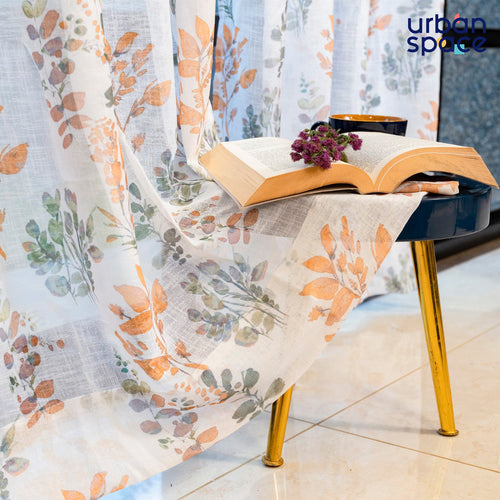Modern Curtains for the Office: A Comprehensive Guide

In the evolving landscape of office design, modern curtains have become a significant element in creating a professional, aesthetically pleasing, and functional workspace. This guide will explore various aspects of modern office curtains, including design trends, material choices, functionality, and practical tips for selection and maintenance.
Design Trends

1. Minimalist Aesthetics:
Modern office curtains often embrace minimalist aesthetics. Clean lines, solid colors, and simple patterns are favored over ornate designs. Neutral tones such as white, gray, and beige are popular choices as they create a calm and professional atmosphere. However, bold colors like navy blue, emerald green, or even black can be used to make a statement or match corporate branding.
2. Geometric Patterns:
Geometric patterns, such as stripes, chevrons, or abstract shapes, can add a touch of modernity to office spaces. These patterns are often subtle and understated, ensuring they do not overwhelm the room but still contribute to a contemporary look.
3. Metallic Accents:
Incorporating metallic accents into curtain designs is a growing trend. Curtains with metallic threads or subtle metallic patterns can add a touch of sophistication and modernity to an office. These accents can reflect light, adding brightness to the space.
Material Choices

1. Natural Fabrics:
Sustainability is a key consideration in modern office design. Natural fabrics such as cotton, linen, and silk are preferred for their eco-friendly properties and aesthetic appeal. These materials offer a soft, luxurious feel and are available in a variety of textures and weights to suit different needs.
2. Synthetic Fabrics:
Synthetic fabrics like polyester and acrylic are popular for their durability, ease of maintenance, and affordability. They are available in a wide range of colors and patterns, making them versatile for modern office settings. Additionally, some synthetic fabrics are designed to mimic the appearance of natural fabrics, providing a cost-effective alternative.
3. Blended Fabrics:
Blended fabrics, which combine natural and synthetic fibers, offer the best of both worlds. They provide the aesthetic appeal of natural materials with the durability and ease of maintenance of synthetics. These fabrics are often used in modern office curtains for their practicality and versatility.
Functionality

1. Light Control:
Controlling the amount of natural light entering the office is crucial for creating a comfortable working environment. Modern office curtains come in various opacity levels, from sheer to blackout, allowing for precise light control. Sheer curtains can diffuse harsh sunlight, creating a soft, pleasant glow, while blackout curtains are ideal for conference rooms or areas requiring complete darkness.
2. Acoustic Properties:
Noise reduction is another important consideration in office design. Heavy, thick curtains made from materials like velvet or wool can help absorb sound, reducing noise levels and creating a quieter workspace. Acoustic curtains are particularly useful in open-plan offices or spaces with high ceilings where sound can easily travel.
3. Thermal Insulation:
Thermal insulation is essential for maintaining a comfortable temperature in the office. Insulated curtains, also known as thermal curtains, can help regulate indoor temperatures by reducing heat loss in winter and blocking heat in summer. This can lead to energy savings and a more comfortable working environment.
4. Motorization and Automation:
Modern technology has brought motorized and automated curtains into the office space. These curtains can be controlled remotely or set on a schedule to open and close at specific times. This feature is not only convenient but also enhances energy efficiency and security.
Practical Tips for Selection and Maintenance

1. Measure Accurately:
Accurate measurements are crucial for selecting the right size of curtains. Measure the width and height of the window, and consider the desired length of the curtains. For a modern look, curtains should ideally hang from the ceiling to the floor, creating an illusion of height and adding elegance to the space.
2. Choose the Right Hardware:
Curtain rods and other hardware should complement the overall design of the office. Sleek, minimalist rods in materials like stainless steel or brushed nickel are ideal for modern settings. Ensure the hardware is sturdy enough to support the weight of the curtains.
3. Consider Maintenance:
Choose curtains that are easy to clean and maintain. Machine-washable fabrics are practical for office settings where regular cleaning may be necessary. Some modern curtains are treated with stain-resistant or antimicrobial finishes, making them easier to maintain.
4. Layering:
Layering curtains can provide added functionality and aesthetic appeal. Pairing sheer curtains with heavier drapes allows for flexibility in light control and privacy. This combination can also add depth and texture to the office décor.
5. Professional Installation:
For a polished and professional look, consider hiring a professional for curtain installation. They can ensure the curtains are hung correctly, aligned properly, and operate smoothly. This is particularly important for motorized or automated curtains.
Conclusion
Modern office curtains are more than just a decorative element; they play a crucial role in creating a functional, comfortable, and stylish workspace. By considering design trends, material choices, and functionality, you can select the perfect curtains that meet the needs of your office environment. With accurate measurements, appropriate hardware, and proper maintenance, modern curtains can enhance the overall aesthetic and practicality of your office space.
